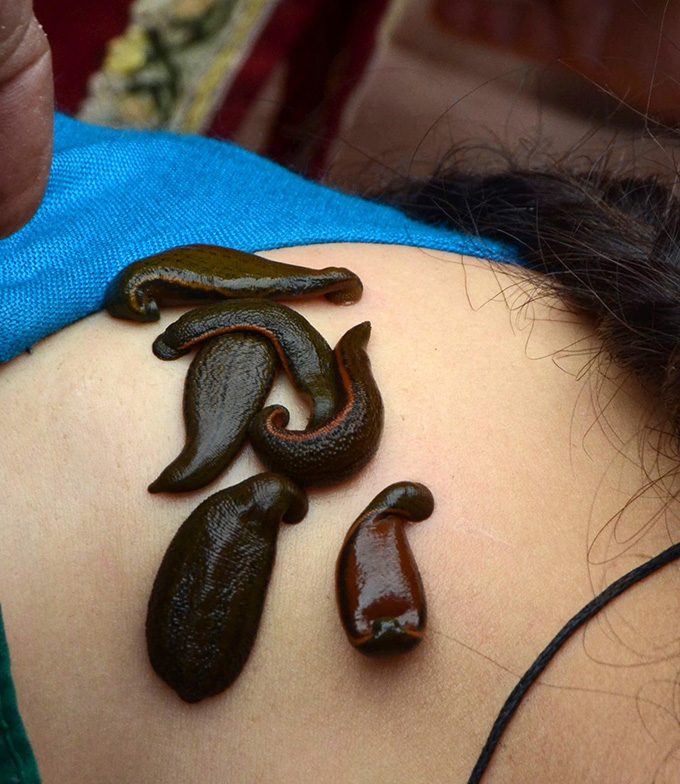The Unani system of treatment is gaining popularity in Kashmir for its minimal side effects and affordability. Ikhlaq Qadri reports

Nothing seemed to work for Ajaz, who is suffering from Rheumatoid arthritis. The years-old disease would give him too much of pain. In winters he could not even attend his office. Too much of money went into the treatment but in vain.
When one of his relatives suggested him to try Unani medicine, he decided to give it a try. He responded to the treatment well.
“The treatment was effective and economical as well. I had spent a huge sum on costly medicines prescribed by different doctors over last few years,” says Ajaz.
Many people are trying Unani and other alternative systems of medicine because of their minimal side effects and affordability.
The government-run hospital of Unani medicine at Habbak, Hazratbal on an average receives 200 patients in its Out Patient’s Department (OPD) every day. The hospital also has an Inpatients department where patients admitted to the hospital are treated.
“It is like a private hospital outside the valley. Calm environs and hospitable staff make the patients feel comfortable. I have not found such a facility at valley’s other hospitals,” said a Ghulam Ahmad, a patient admitted in the hospital.
The hospital was started as ‘Drug Standardization Unit’ in 1981 with the collaboration of Kashmir University’s, Department of chemistry. In 1983, the OPD was started near the university gate and continued there until 2004. It was later shifted to the new building outside the university and turned into a full-fledged hospital with a 50-bed inpatient’s department.
The consultation fee is two rupees and the medicine costs only one rupee per consultation. The patients admitted for treatment are not charged anything. The hospital also provides them with lunch and dinner.
“We treat patients admitted in the hospital free of cost and also provide them food,” says Dr Najeeb-ul- Islam, head of the Department of Medicine. He has been associated with the hospital for the last twenty-four years.
The patients’ progress is regularly monitored and recorded. The monthly report is then sent to the Central Council for Research in Unani Medicine, New Delhi.
“We regularly monitor the response of the patients after being given the registered drugs,” said Dr Najeeb.
Anjum is visiting the hospital for treatment of Psoriasis – a non-communicable but stubborn skin disease. She claims to have tried various medicines but it could not be cured.
“Unani medicine helped me to get rid of this stubborn disease,” says Anjum.
Though the Unani system of medicine is not very popular in the valley, a number of people are turning to it.
“It is a healthy sign that people are realising the importance of Unani way of treatment. It’s heartening to see patients showing positive response to medicines,” says Dr Shafat Ahmad.
Medical Education in Unani system is recognised by the government of India. The bachelor’s course in Unani Medicine is of five and a half year duration and the postgraduate course can be done in three years.
The Unani system of medicine owes its origin to Greece. It emphasises on diagnosing the disease through Nabz (pulse), the examination of Baul (urine) and Baraz (stool).
The Unani system has shown significant results in curing various ailments. Clinical trials of a combination of medicines were conducted on 2844 patients suffering from Bronchial asthma-a common disease in the valley. The combination of medicines was given in the form of a paste orally for a period of 90 to 120 days. Out of these patients, 2217 completed the trial. A total of 1328 (47 per cent) showed complete remission whereas 622 (22%) cases showed partial remission. 267( 9%) cases showed no response and 627 ( 22%) cases dropped out of the study due to various non-medical reasons.
Another clinical trial for rheumatoid arthritis also showed good results. Out of 3878 patients in the trial, 2017 (52.01%) showed complete remission whereas 775 (19.9%) showed partial remission. 426 (10.9%) patients did not respond to the treatment and 660 (17.0%) were dropped out during the trial.
The doctors in the hospital say that they have achieved a success rate of 69.2 % in treating Helminthiasis – a micro parasitic disease in which a part of the body is infested with parasitic worms such as pinworm and roundworm. There has been a 60 per cent success treating Psoriasis with a combination of drugs.















